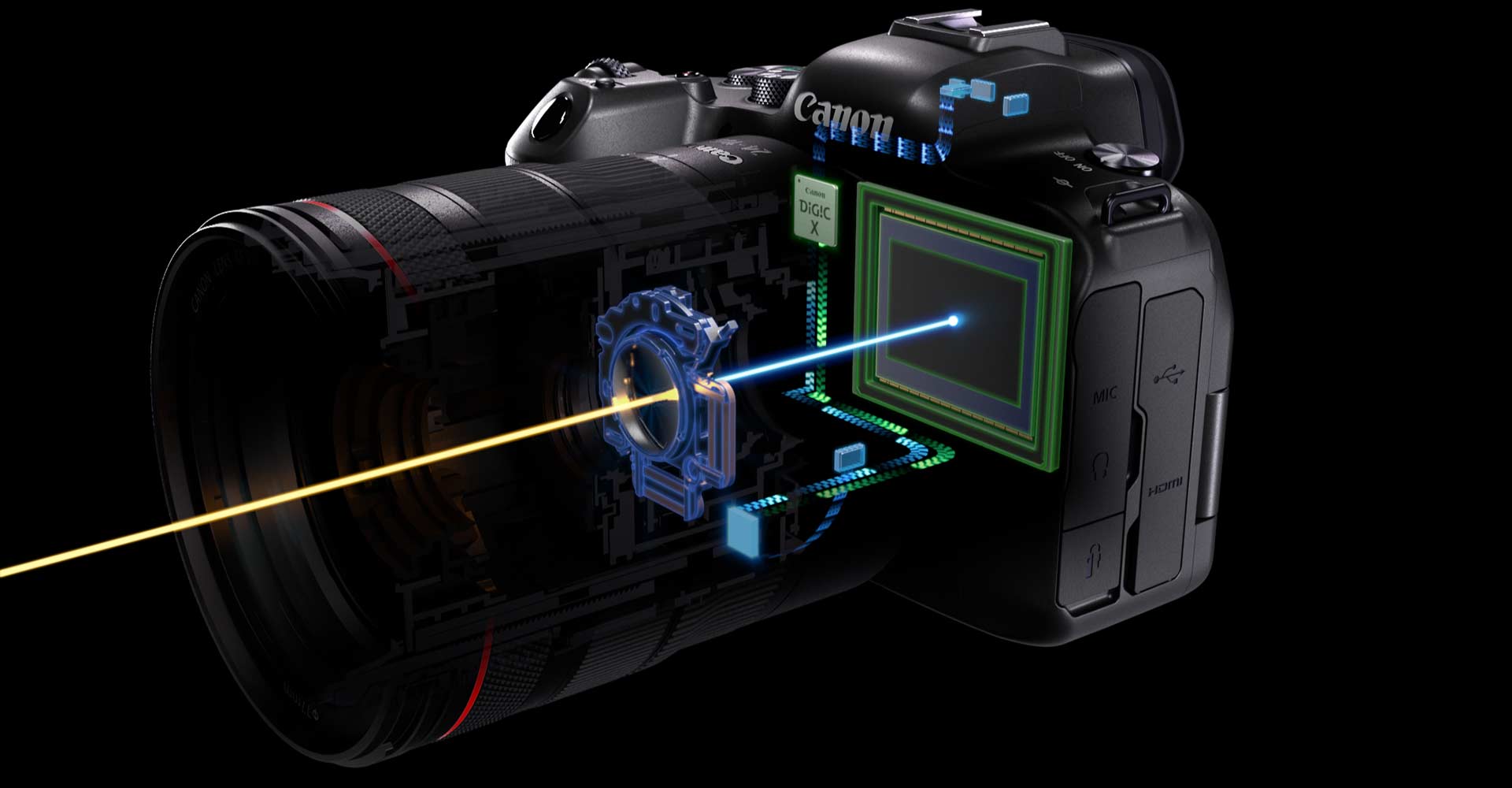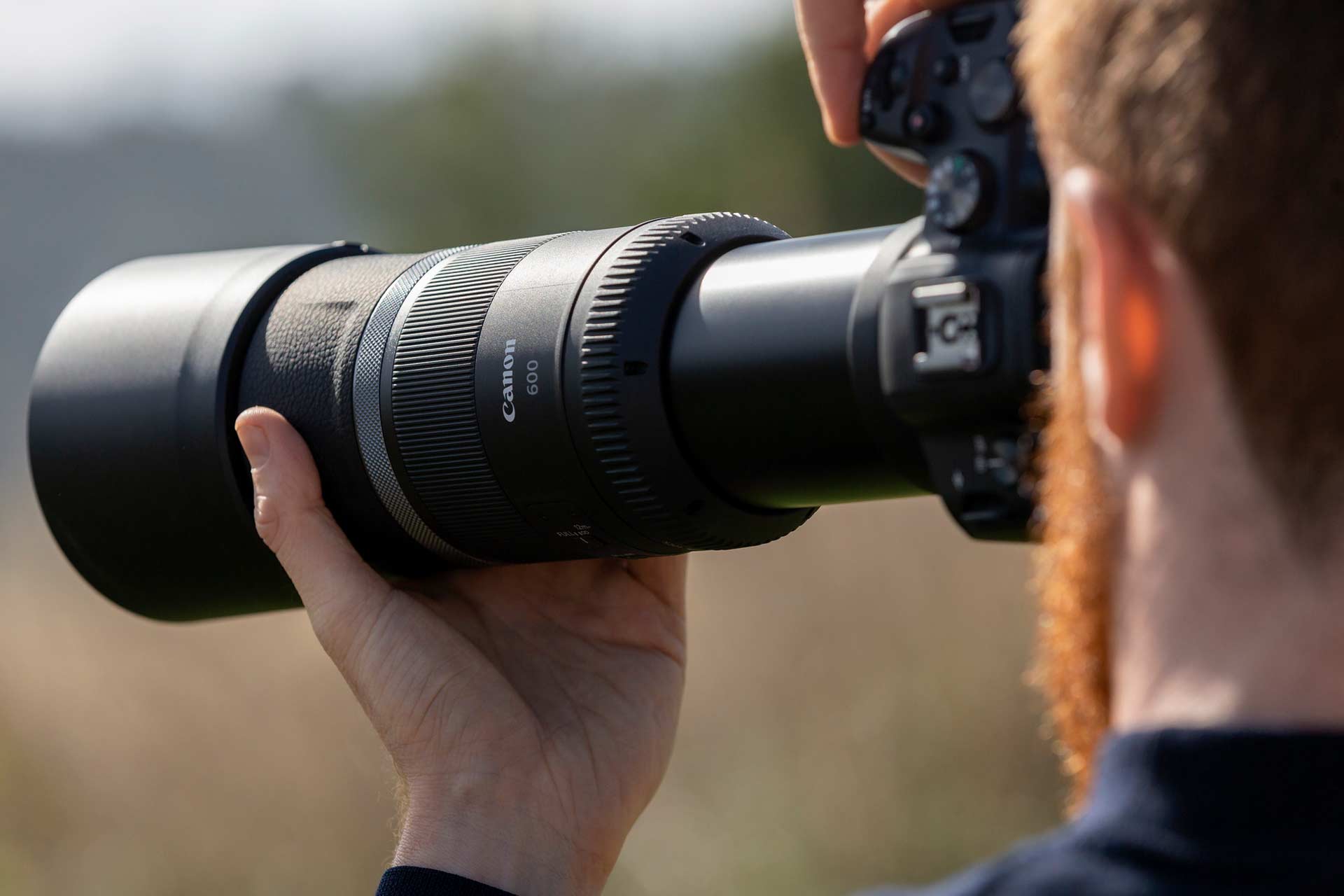Five axes are supported with coordinated image stabilisation (lens-based IS + IBIS).
When using different lens types (RF, EF and EF-S bayonet lenses or manually-adjusted lenses), image stabilisation is performed according to the following rules:
RF lenses:
Without optical image stabiliser (IS): IBIS stabilises all five axes.
With Optical Image Stabilizer: IBIS supports two axes at long shooting distances (pitch/yaw) and extends stabilisation to all five axes.
EF and EF-S lenses:
Without Optical Image Stabilizer: IBIS stabilises all five axes.
With Optical Image Stabilizer: IS stabilises as before; IBIS extends stabilisation to all five axes.
Manually-adjusted lenses:
IBIS stabilises all five axes. The focal length of the lens is entered manually in the camera menu.
The stabilisation functions in detail
With EF and EF-S lenses, there is a "division of labour" between the different stabilisation methods. To simplify, let's assume that an EF lens uses a non-hybrid IS (see Hybrid IS below for a definition). This version of the IS is built into the vast majority of EF lenses with IS: The lens-based IS stabilises the "pitch" and "yaw" movements. IBIS stabilises when the camera is moved (parallel) right/left and up/down (X/Y axis) and when "rolling".
When using a lens with hybrid IS (e.g. EF 100mm F2.8L IS Macro or RF 35 F1.8 IS Macro), the lense-based IS stabilises when the camera is moved right/left and forward/backward. In this case, IBIS will only stabilise when the camera is "rolling".
If there is no option for image stabilisation in the camera's settings menu, IBIS and the lens-based IS will work together (split - depending on focal length - or coordinated - that is complementary, depending on which system (EF or RF) is fitted). In these two cases, image stabilisation can only be switched off using the switch on the lens. The menu item for disabling IBIS only appears when using non-stabilised lenses.
IBIS works with all EF lenses, providing additional stabilisation methods (at the very minimum "Roll").
It works in a coordinated way with RF lenses. Not only does it provide additional stabilisation methods that the IS lens does not, but it also enhances the performance of the RF lens by providing additional levels of stabilisation. For example, the RF 15-35mm F2.8 L IS USM stabilises 5 stops with the lens-based IS. IBIS adds two more stops (according to CIPA measurements) so that this lens achieves a total stabilisation of 7 stops.
This improvement through the coordination of both IS systems also depends on the focal length: long focal lengths are better stabilised by the lens-based IS, while medium and wide-angle focal lengths are more effectively supported by IBIS.
A plus sign "+" next to the "white hand" in the camera's display indicates that the stabilisation systems are co-ordinated.



